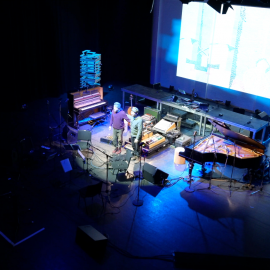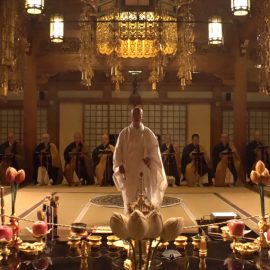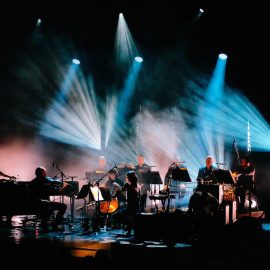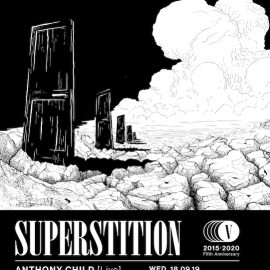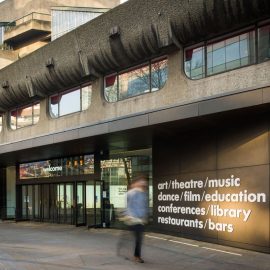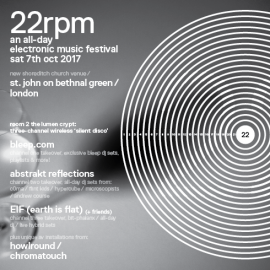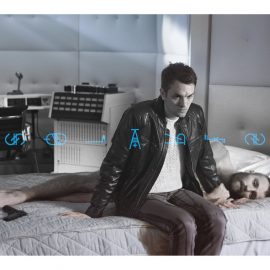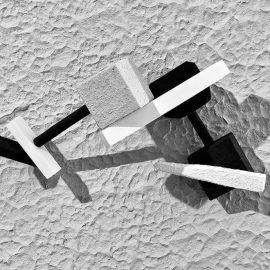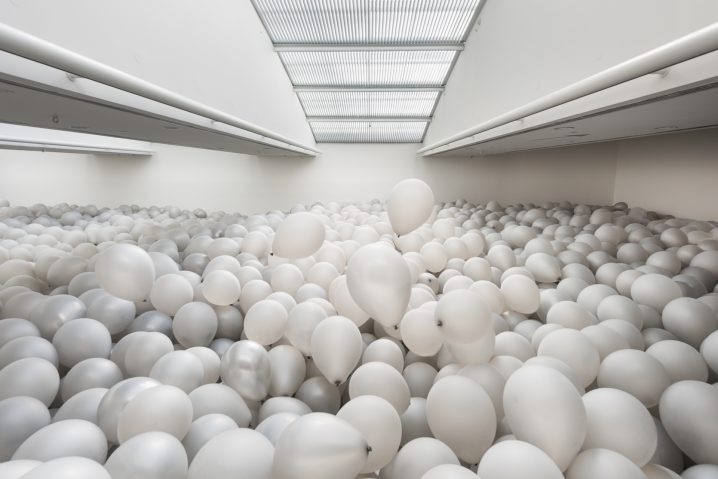
Successive days of performances and nonstop jaunts around the city outside of the festival setting began to make their weight felt by the fourth day. There are times when one is truly grateful to live in an urban epicenter where some of the better espresso to be had in North America is readily available. In tandem with the infectious social engagement from Decibel’s population hike of 20,000 sonically literate persons about its neighborhoods, shops, galleries and venues, there’s a sustaining buzz that keeps you aloft. Not only functional, but attuned to whatever the next series of cultural, social, communal and artistic engagements are to bring. And what’s the best response to festival fatigue? Walking another five miles and taking in the abundance of authentic culinary opportunities, city, sun and Martin Creed‘s 37,000 balloon “Work No.360: Half the Air in a Given Space” at the Henry Art Museum. While on the surface it may just read as a fun, yet shallow-premise installation work, upon being dropped into its center became a much more discomfiting, claustrophobic and viscera jostling affair. Creed’s literally immersive balloon space became a race against the confines of the nine foot deep well of grey inflated spheres and the internal clock of one’s own comfort threshold. To varying degrees anyone in the space would have to reach an internal dialog in relation to their acceptance (or not) of the disorientation the experience generated. Some people visibly fared better than others. Immobilized in a tight corner by a vantage-obscuring wall of grey, I ceased attempting to pass through its mass and took a moment to note the parallels with the previous night’s Autechre performance. Both generated a space for the participant when preconceptions and expectant projections of a timeline were put aside in favor of allowing the event itself to guide you. With work like this there’s satisfaction in submitting to its execution, wherever that may lead. You also look pretty foolish when engaged in a struggle against the tidal flow of this globophobe’s nightmare.
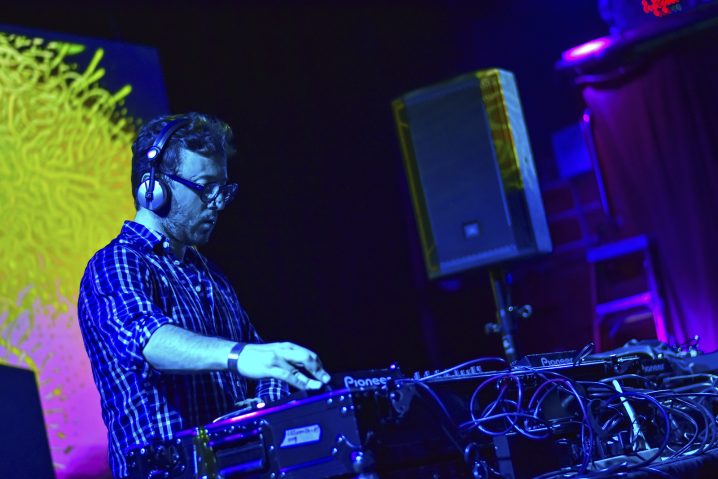
Certainly the internet is the dominant conduit for new musical discoveries in the current era, but live shows, in a complimentary setting, an expressive sound system and receptive audience can make it more than just the affirmation of what one previously heard online. It can come to mean more than the pleasure of the new discovery on an artist’s Bandcamp page, Spotify or Drip.FM. Instead you can find yourself in a confluence where the associated communal, creative and intellectual scene, its aesthetics and the dialog of the sound’s lineage all unspool before you. The connections happen. This was the case for the first of the festival’s audio-visual showcases, the suggestively titled Optical 1: Dark Overtones, held this year at the Triple Door dinner theater. Let it be said here that the setting of previous year’s Optical events in the refinement of Seattle Symphony’s Nordstrom Recital Hall, made for an unparalleled venue experience. The Triple Door has its benefits, a high-end sound system and engineers to match among them, but the bustle of the wait staff and hundreds of people masticating while engaged in dinner chatter don’t necessarily compliment the subtle intonations of ambient music’s austere spaces. Good thing then for the volume levels and the meticulous nature of the mix, a tip of the hat needs to be given to Decibel’s Technical Director, Vance Galloway and his deft hand and almost metaphysical way with sound. Having only heard Guy Brewer’s puzzlework techno under his Shifted moniker, the unexpected languorous pace, smooth surfaces and pink noise of his drone based Alexander Lewis project came as the first of the evening’s surprises. Less of a surprise that the UK’s Blackest Ever Black label would play host to his releases, their singular manifesto seeming to be the issuing of more ominous forbearance into the world, regardless of genre. Brewer’s textured approach to pitch-black electronics and the slow motion unfurling of their surfaces to reveal cavernous valleys of low-end fit the bill perfectly.

The festival’s major discovery came in the form of a second, startlingly different set from Dasha P. Van Celst aka Dasha Rush, after the techno sparsity that comprised the previous night’s DJ set. Armed with an array of hardware and effects and a microphone she spun out a dubby, fluid, yet dynamic set of material in the vein of her recent “Sleepstep” for Raster-Noton. Building loose-framed rhythmic and tonal scaffolding into which she injected often liminal whispered, reverband delay drenched vocal wanderings in the style of a hypnotic account. The album’s title thematically suggestive of the minor keys and muted colorful hues that describe the music’s dream wanderings through forested pools of shadow and barren urban streets. Succumbing to its enticements with ease, she continued over course of some eighty minutes to produce a set characteristic of Sasu Ripatti‘s early live dub and sample-based ventures under his Vladislav Delay moniker. It wasn’t a stretch to conceive of an entrancing, rarefied new genre-form to which Ripatti, musician, poet and composer Antye Greie, and Dasha belong. Audience response was nothing short of accordant enthusiasm, so it wasn’t my own preexisting disposition to this sound at work. The talent and distinction of the creative voice on stage was consummate, and beyond doubt.
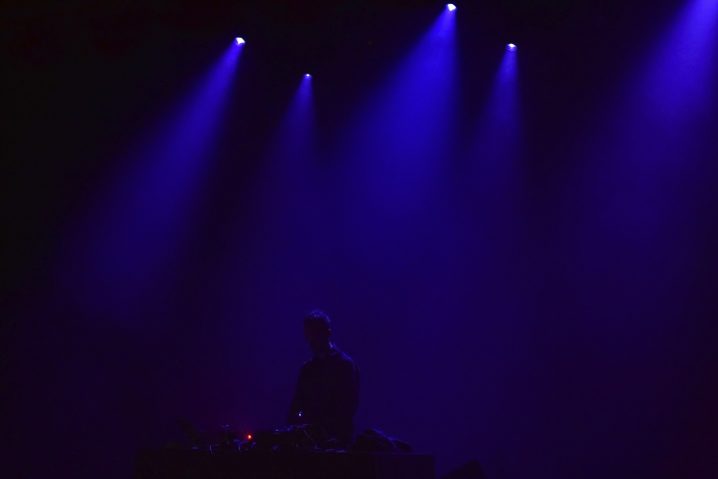
The cascading waves of timbral and dissonant acoustic and electric sounds processed through healthy servings of delay and software manipulation that followed were immediately identifiable as that of Canada’s Tim Hecker. Having seen decades of performances in cities across North America beginning in Montreal in 2002, shortly after the release of Substractif’s Haunt Me, Haunt Me, Do It Again, one can mark the incremental, quantifiable evolution of his compositional approach. The most striking of the advances came with 2013’s Virgins for his longtime label of residence Kranky Records. Realized with a larger ensemble of chamber performers, including Iceland’s Ben Frost on classical and electric instruments, its torrential squall of mangled, disembodied instrumental voices invokes parallels with the electro-acoustic and tape music of modernist pioneers Bernard Parmegiani and Iannis Xenakis. The following November the gale storm of its effusion came raining down in 6.1 surround sound as part of the touring Immersound concert series with label mate Christopher Bissonnette in the vaulted cathedral of Seattle’s Chapel Performance Space. As a product, any representation in stereo regardless of how well realized was going to pale a bit. Putting in a solid performance of selections spanning the last half-decade of albums, as well as a few momentary glimpses into his recording future, Hecker’s set was a versant showing with brilliant fidelity underscored by room-shuddering bass. The Immersound performances may have upped the ante in such a way that the ceiling has reached nonpareil, untouchable heights. Such are the perils of perfection.
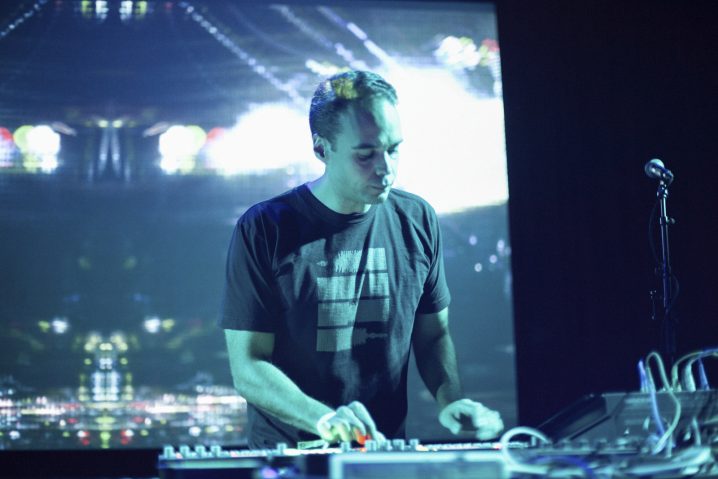
Not for lack of an enticing lineup, but due to the aforementioned simultaneous time/place conundrum of the Sublime showcase at The Showbox overlapping precisely with that of Kompakt‘s night at Neumos across the city on Capitol Hill, that Brainfeeder artist Taylor McFerrin‘s virtuoso piano playing and soulful stylings were entirely missed. This was another for the festival’s casualties along with the Motor showcase of the night before. Disappointing at the time, but may have been for the best as the sensory fatigue of four nights of performances and ten miles of footwork a day began to take its toll. The bodily wear and tear was negligible, but the attenuation and dip in perceptive lucidity began to verge on the softheaded. Where better to find yourself than in the full-on steaming dancefloor as Germany’s Kompakt bring a little of their legendary Cologne nights to a hilltop neighborhood in North America. Seminal doesn’t begin to describe the legacy of Michael Mayer and Wolfgang Voigt‘s institution, even a few years on the label’s 20th Anniversary celebrations throughout Europe are still being spoken of in reverential tones. Their showcase in this year’s Decibel was a more humble affair, but the workmanlike techno of Pokerflat’s John Tejada certainly had the crowd going upon walking in the door. John has nearly put in as many appearances over the years as there have been iterations of Decibel in Seattle, a mainstay of west coast techno, he’s very nearly the poster-boy for the organization. A decorous companion to the sweltering glam, arpeggiated synth and schaffel-beat of Sébastien Devaud’s Agoria, the two brought the last fading glimmer of the summer’s big European club nights to the Northwest September. One could even catch a little of the warm breeze drifting in off the Adriatic, the waning indigo blue of the night’s sky, the lapping of the ocean’s waves against the city’s stone walls, doors open, clubs brimming until the long hours of the night.
Words by Jefferson Petrey for Headphone Commute
